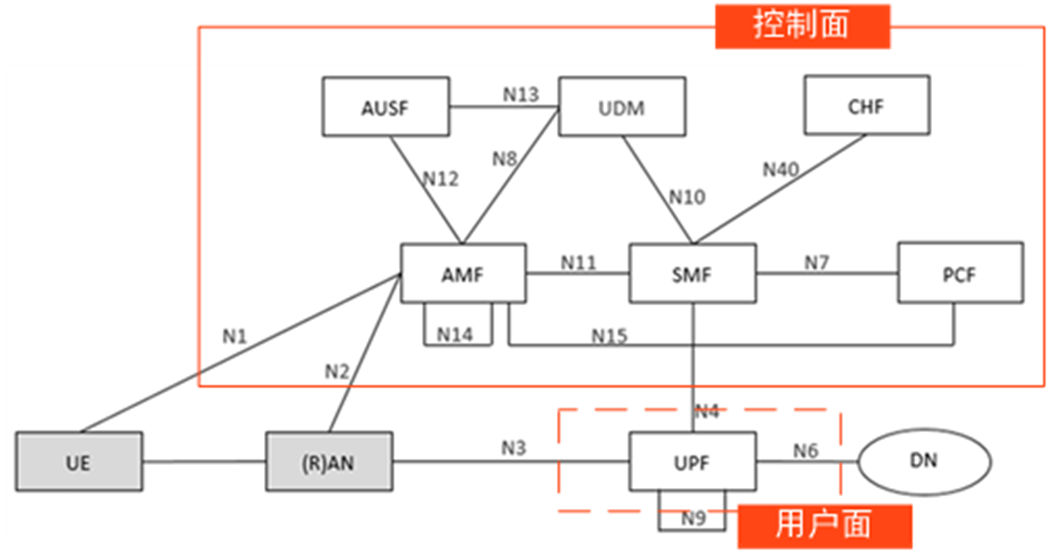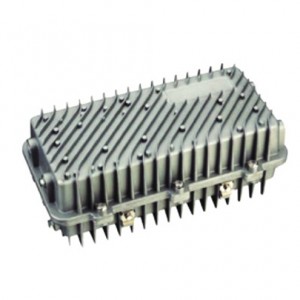5G core network, x86 platform, CU and DU separated, centralized deployment and UPF sunken separately deployment, M600 5GC
Short Description:
MoreLink’s M600 5GC is an evolution to splitting architecture based on 4G-EPC, which changes the disadvantages of integral EPC network, such as complex network schema, reliability scheme is difficult to implement, and operation and maintenance difficulties caused by the interweaving of control and user messages, etc.
The M600 5GC is a 5G core network product with independent intellectual property rights developed by MoreLink, which complies with 3GPP protocol to split the 5G core network functions from user plane and control plane.
Product Detail
Product Tags
Product Overview
MoreLink’s M600 5GC is an evolution to splitting architecture based on 4G-EPC, which changes the disadvantages of integral EPC network, such as complex network schema, reliability scheme is difficult to implement, and operation and maintenance difficulties caused by the interweaving of control and user messages, etc.
The M600 5GC is a 5G core network product with independent intellectual property rights developed by MoreLink, which complies with 3GPP protocol to split the 5G core network functions from user plane and control plane. It adopts the Network Function Virtualization (NFV) design philosophy to construct the network in software, modularization, and servitization, which helps the user plane to break away the constraint of centralization to realize flexible deployment.
The M600 5GC mainly includes element modules the User Plane Function (UPF), Access and Mobility Management Function (AMF), Session Management Function (SMF), Authentication Server Function (AUSF), Unified Data Management Function (UDM), Unified Data Repository (UDR), Policy Control Function (PCF), and Charging Function (CHF), as well as Local Maintenance Terminal (LMT) module used for configuration and maintenance. The module structure as below:

Features
-Based on general hardware server to support virtualization; operating in X86 platform physical server, VMware/KVM or virtual container.
-Lightweight: function modularization, the minimum memory requirement for hardware is 16G, satisfying the high throughput requirement of communication basic functions.
-Simple: easy to deploy and maintenance, one-button offline deployment, operation and maintenance based on web.
-Flexible: control plane and user plane separated, the UPF can be deployed in any position independently, and expanding capacity as needed to meet different networking requirements.
Typical Scenarios
MoreLink M600 5GC product supports 5G Option 2 deployment structure. Two deployment methods are recommended based on scenarios. M600 5GC is based on X86 structure with hardware and software decupling. Operators can adopt centralized deployment or UPF sunken deployment according to the application environment. Both the M600 5GC and the user plane product UPF can be deployed on local X86 server, on the private cloud, KVM/VMWare or container.
Centralized Deployment:

The M600 5GC centralized deployment mode is usually used in vertical industrial applications to establish 5G private network, which will provide stable high-speed data access service for 5G terminals and offer extreme 5G connection experience for users. This kind o deployment method can simplify the network structure to facilitate the operating and maintenace, so as to save CAPAX and OPEX.
UPF Sunken Separately Deployment:

M600 5GC is based on CUPS structure, which can be widely used in vertical industrail applications and complied with MEC structure of ETSI standard. It deploys UPF user plane of the M600 5GC near the access network to satisfy the MEC’s requirements in low delay, high reliability and data isolution.
Network Structure

M600 5GC Network Structure
M600 5GC includes the following network elements:
➢ AMF: Access and Mobility Management Function
➢ SMF: Session Management Function
➢ UPF: User Plane Function
➢ AUSF: Authentication Server Function
➢ UDM: Unified Date Management
➢ UDR: Unified Date Repository
➢ PCF: Policy Control Function
➢ CHF: Charging Function
Network Interface
|
Reference Point |
NE |
|
N1 |
UE<-->AMF |
|
N2 |
(R)AN<-->AMF |
|
N3 |
(R)AN<-->UPF |
|
N4 |
SMF<-->UPF |
|
N6 |
UPF<-->DN |
|
N7 |
SMF<-->PCF |
|
N8 |
UDM<-->AMF |
|
N9 |
UPF<-->UPF |
|
N10 |
UDM<-->SMF |
|
N11 |
AMF<-->SMF |
|
N12 |
AMF<-->AUSF |
|
N13 |
UDM<-->AUSF |
|
N14 |
AMF<-->AMF |
|
N15 |
AMF<-->PCF |
|
N35 |
UDM<-->UDR |
|
N40 |
SMF<-->CHF |
Function Features
|
NE |
Features |
|
AMF |
AM policy associated control |
| Registration management | |
| Connection management | |
| Service request | |
| Session management | |
| Mobility management | |
| Safety management | |
| Accessibility management | |
| AN release and paging | |
| UE wireless capability | |
| Event subscription and notification | |
| Network slicing | |
| UE context management | |
| SMF/PCF/AUSF/UDM management | |
|
SMF |
Connection management |
| Event subscription and notification | |
| Session management | |
| Service offload and UPF insert and remove | |
| UE IP address assignment | |
| TEID management | |
| UPF selection | |
| Usage report control | |
| Charging management | |
| Policy rule management | |
| N4 interface | |
| Service continuous mode | |
| QoS rule | |
| Data caching rule | |
| Downlink data cache enable and process | |
| SM policy associated control | |
| Non-active timer | |
| NE level report | |
| Session level report | |
| PCF/UDM/CHF selection | |
| N4 tunnel forwarding | |
|
UPF
|
PFCP coupling management |
| PDDU session management | |
| GTP-U tunnel | |
| N4 GTP-U tunnel | |
| Service identification and forwarding | |
| Uplink service offload(UL CL&BP) | |
| Gate control | |
| Data caching | |
| Traffic Steering | |
| Traffic Reddirection | |
| End Mark | |
| Differential service (transport layer identify) | |
| F-TEID management | |
| Non-active timer | |
| Package flow description configuration (PFD) | |
| Pre-defined rule | |
| QoS rule and execute | |
| Usage detect and report | |
| NE level report | |
| Session level report | |
| Deep packet inspection (DPI) | |
| Multi instance network forwarding | |
|
UDM |
5G-AKA authentication |
| EAP-AKA authentication | |
| Safe context management | |
| Contract data management | |
| Generate 3GPP AKA identify verification evidence | |
| Continuous service session mode | |
| UE context management | |
| UE access authorization | |
|
UDR |
Authentication and contract data storage and query |
| View the authentication status, pre-configured information, access and mobility information, SMF selection data and UE context information | |
| Create, update and view of AMF/SMF registered information | |
| Create, update, delete and view SMF information | |
| Create, update, delete and view of SDM information | |
|
PCF |
Access management policy control |
| Session management policy control | |
| UE Policy control | |
| Access policy data in UDR | |
|
CHF |
Offline charging |
|
Reliability |
1+1 redundant backup |
|
LMT |
Configuration management |
| Monitor management | |
| Information query |
Operating Environment
Operating Environment Requirements
|
Item |
Description |
| Hardware platform | X86 industrial serverKVM/VMware virtual machineDocker container
Public cloud/private cloud virtual machine |
| Operating system | Ubuntu 18.04 server |
Minimum Hardware Requirements
|
Item |
Description |
|
CPU |
2.0GHz, 8 cores |
|
RAM |
16GB |
|
Disk |
100GB |
Network Card Requirements
Recommend network interface number is above 3, the best is 4.
|
Name |
Type |
Usage |
Remark |
| Eth0 | RJ45, 1Gbps | Management plane | None |
| Eth1 | RJ45, 1Gbps | Signaling plane | None |
| Eth2 | SFP+, 10Gbps | N3 interface of user plane | DPDK must be supported |
| Eth3 | SFP+, 10Gbps | N6/N9 interface of user plane | DPDK must be supported |
NOTE:
1.Typical configuration refers to above table. For different networking and features, the number of network interface and throughput should be considered.
2.Before deployment, the following material should be prepared: switch, firewall specification, optical module, optical fiber and power, etc.
Product Specifications
M600 5GC includes standard and profession types. The two kinds of provide the same software features and have different hardware specification and performance.
Standard Hardware Specifications:
|
Item |
Description |
|
CPU |
Intel E5-2678, 12C24T |
|
CPU number |
1 |
|
RAM |
32G, DDR4 |
|
Hard disk |
2 x 480G SSD |
|
Network adaptor |
2 x RJ-45 2 x 10G SFP+ |
|
Power consumption |
600W |
CAPACITY & PERFORMANCE:
|
Item |
Description |
|
MAX. users |
5,000 |
|
MAX. sessions |
5,000 |
|
Throughput |
5Gbps |
Professional Hardware Specifications:
|
Item |
Description |
|
CPU |
Xeon 6248, 2.5GHz, 20C-40T |
|
CPU number |
2 |
|
RAM |
64G DDR4 |
|
Hard disk |
2 x480G SAS |
|
Network adaptor |
2 x RJ-45 4 x 40G QSFP+ |
|
Power consumption |
750W |
CAPACITY & PERFORMANCE:
|
Item |
Description |
|
MAX. users |
50,000 |
|
MAX. sessions |
50,000 |
|
Throughput |
20Gbps |







